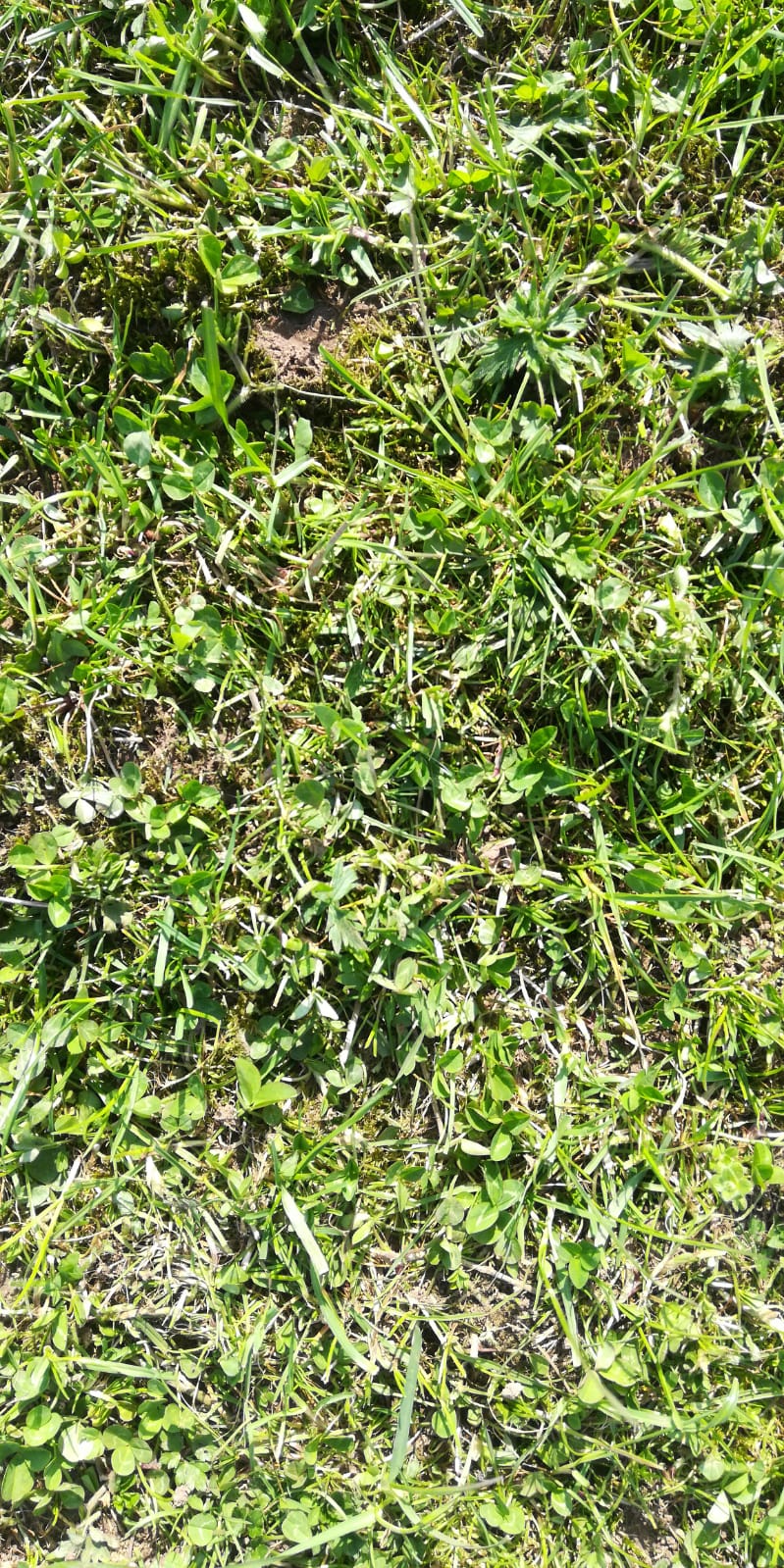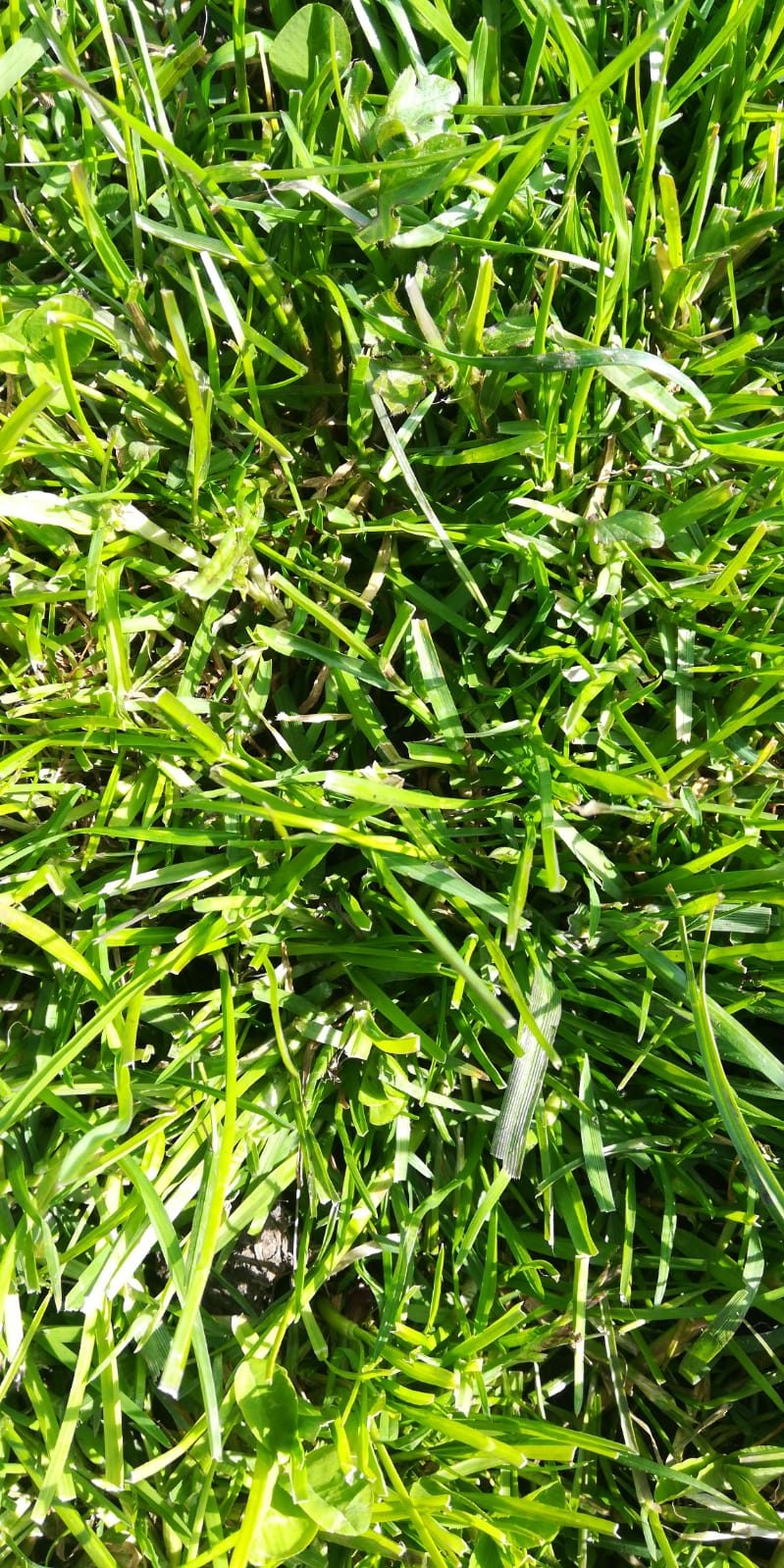- Home
- Knowledge library
- Managing white clover
Managing white clover
See our tips on white clover management, and how Robert Drummond uses clover in an organic system.
Top tips for management
- Assess stolon growth in the spring and treat as though the stolons are weak and vulnerable
- Avoid excessive stolon damage from poaching
- If clover content is too low, do not allow grass to shade it out. Make sure it is grazed frequently, or take the paddock out of the grazing rotation as surplus before the plants gets too mature
- Keep grass at 4–6 cm over the winter to protect stolons from frost damage
- If clover content is too high, use intensive grazing or strategic nitrogen (N) use to increase grass growth
Case study
Using white clover and ryegrass leys in an organic dairy system. Robert Drummond, Ayrshire
Osliebrae is home to a herd of 60 organic-Ayrshires and followers on 170 acres. The autumn-calving herd grazes in late February, through on/off grazing, until full turnout in late March through to late October/early November. It produces 3,850 litres from forage. The goal is to utilise 10 t DM/ha/year. Robert is one of 32 Forage for Knowledge contributors, who measures and monitors weekly grass growth and quality results throughout the season.
Clovers and other legumes are essential to optimise organic pasture output and quality. Together with organic manures, they are vital for building and maintaining soil fertility in the absence of artificial fertiliser. However, one size does not fit all. Robert says, “I use a variety of white clovers on the farm, from medium to small leaf varieties, to cope with tight grazing. The smaller-leaved varieties tend to survive better in some pastures. I have tried red clover in the past, but it doesn’t survive well in this cold climate; it tends to last only two to three seasons compared with grass and white clover leys, which last 7+ years.” Usually, Robert reseeds fields after 7–8 years. The leys receive no extra seed during this time. Robert’s seed selection toolkit:
- Recommended Grass and Clover List
- Advice from local seed merchant
- Organic seed derogation, to include a proportion of non-organic clovers in the ley
Robert says, “I choose a broad-range clover mix, predominantly sown with perennial ryegrasses. The choice of organic clover varieties is limited; however, the organic seed derogation helps so I can include a percentage of highly productive, non-organic clover in the ley. The climate in Ayrshire means I can’t sow any earlier than May because the soil would be too cold – we still get grass frosts in April. I usually plough and then put the seed in with a spring tine harrow with air-seeder. I aim to get bales from the new ley in July, then cut again or graze later in the season.”
The main benefit clover brings to Robert’s farm is its nitrogen fixing ability and ease of management. “On my farm, the nitrogen fixing ability of clover is crucial for summer growth. I also find it easy to manage: I don’t have any problems with bloat and it can cope with tight grazing, which helps to control weeds. Tight grazing and the absence of artificial fertiliser help to maintain the balance of clover and ryegrass in the sward, preventing either species from becoming dominant.”
Robert aims to graze until late October/early November to reduce housing and feed costs, so it is crucial to maintain a productive sward. “I assess sward growth weekly and look forward to receiving the results of the forage samples. It is interesting to see how different paddocks vary in quality. Measuring swards and making sure paddocks are at the correct pre-graze and post-graze point is a key part of rotational grazing. Having good infrastructure is crucial to extend the grazing season through to late October/early November – and the use of cow tracks has been invaluable for achieving this.” During periods of wet weather, cattle are on/off grazed to prevent damage to the ley and reduce poaching.
Five-year-old red clover and ryegrass ley (left) compared with a seven-year-old white clover ley (right). White clover is more suited to Robert’s system

Images copyright Rob Drummond.
Useful links
How to assess the clover content of your pastures
Improving clover on an organic Strategic Farm
Read the Establishing and growing clover guide
Learn more about the Recommended Grass and Clover Lists
If you would like to order a hard copy of the Establishing and growing clover guide or Recommended Grass and Clover Lists, please contact publications@ahdb.org.uk or call 0247 799 0069.
The information in these web pages was sourced from Germinal, Grassland Development Centre (IBERS, University of Aberystwyth) and Charlie Morgan (GrassMaster Ltd).
Topics:
Sectors:
Tags:


